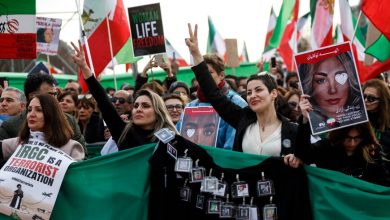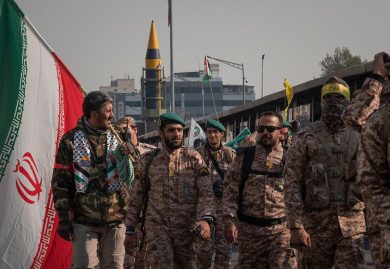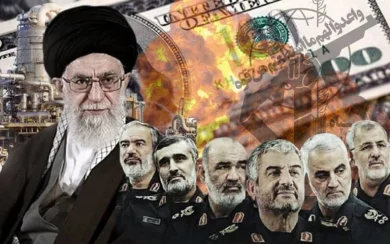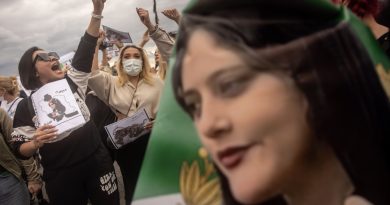For decades, Iranian women have resisted systemic oppression, discrimination, and violence enforced by the Islamic Republic and its hardline enforcer, the Islamic Revolutionary Guard Corps (IRGC). Despite facing arrests, censorship, physical abuse, and even death, they remain at the forefront of protests, legal reforms, journalism, education, and digital activism.
Today, the possibility of a woman-led future for Iran is no longer a distant dream—it is an emerging reality grounded in years of resistance. From the iconic chant of “Women, Life, Freedom” to global recognition of figures like Narges Mohammadi, Masih Alinejad, and countless unnamed activists, Iranian women are not just participating in the movement—they are leading it.
This analysis explores what a future shaped by Iranian women’s leadership could look like, and how such a transformation would impact Iran’s society, politics, economy, and global standing.
1. The Current Landscape: Women at the Forefront
A. Systemic Oppression by the IRGC
Iranian women are subjected to laws that enforce:
• Compulsory hijab
• Gender segregation
• Unequal rights in marriage, divorce, and child custody
• Barriers in employment, politics, and education
The IRGC serves as the main instrument of enforcing these laws, often arresting, beating, or imprisoning women for noncompliance. Yet the more repressive their methods become, the more visible and defiant women’s resistance grows.
B. Resistance Through Protest and Civil Disobedience
The 2022–2023 protests after the death of Mahsa Amini—a young woman killed by the morality police—marked a turning point. Women began:
• Removing hijabs in public
• Leading marches in Tehran, Shiraz, Sanandaj, and beyond
• Using social media to broadcast the truth despite censorship
The protests showed that Iranian women were no longer willing to be passive victims. They demanded a future that includes freedom, equality, and justice—for all Iranians.
2. Vision of a Woman-Led Iran: What Could It Look Like?
A. Equal Rights Under the Law
A woman-led Iran would prioritize equality in law, including:
• Elimination of compulsory hijab laws
• Equal rights in family law, including marriage, divorce, inheritance, and custody
• Legal protections against domestic violence and sexual harassment
• Inclusion of women in judicial and legislative reform processes
B. Feminist Governance and Leadership
Rather than token representation, a woman-led future would include:
• Women in key government roles (President, Ministers, Judges)
• Feminist policy-making centered around equity, human rights, and accountability
• Decentralized and inclusive approaches that reflect Iran’s ethnic and religious diversity
C. Educational Reform
Under the current regime, women face:
• Discriminatory university admissions policies
• Censorship of topics like feminism, sexual health, and political science
In a woman-led Iran:
• Gender equality education would be integrated from early school levels
• Women would have equal access to STEM, humanities, and leadership programs
• Universities would become safe spaces for critical thinking and activism
3. Social Impacts of a Woman-Led Future
A. Breaking Patriarchal Norms
Cultural change would be a major outcome. A woman-led Iran could:
• Dismantle outdated gender roles
• Normalize shared responsibilities in households
• Challenge taboos surrounding sexuality, autonomy, and public presence
B. Healthcare and Reproductive Rights
A feminist Iran would address:
• Reproductive health access, including birth control and abortion rights
• Mental health services, especially for trauma survivors
• Universal healthcare initiatives that address gender-specific needs
C. Media and Artistic Freedom
Under current rule, women artists, filmmakers, and journalists are censored or imprisoned. In a woman-led Iran:
• Freedom of expression would be protected
• Women would lead state and independent media
• Art, film, and literature would reflect diverse female narratives
4. Economic Transformation and Empowerment
A. Equal Employment Opportunities
Today, women make up nearly 60% of university graduates, but less than 20% of the formal workforce. A future shaped by women’s leadership would:
• Close the wage gap
• Invest in child care and parental leave policies
• Encourage entrepreneurship through gender-inclusive funding programs
B. Ending Economic Control by the IRGC
The IRGC controls a significant portion of Iran’s economy, including oil, construction, and telecommunications. A woman-led Iran would:
• Dismantle monopolies and promote economic transparency
• Shift focus from military-industrial priorities to human-centered development
• Redirect resources toward education, healthcare, and social welfare
5. Political Reform and Global Relations
A. Inclusive Democracy
The IRGC currently dominates Iran’s political system through unelected institutions. A feminist political system would:
• Establish secular and democratic governance
• Create independent oversight bodies
• Ensure representation for women, minorities, and marginalized groups
B. Peace-Oriented Foreign Policy
Iran’s current regime invests heavily in proxy wars and regional destabilization. A woman-led Iran would:
• Reevaluate relationships with groups like Hezbollah and the Houthis
• Prioritize diplomacy, cooperation, and human rights
• Rebuild Iran’s global image as a peaceful, rights-respecting state
6. Challenges to a Woman-Led Future
A. Violent Repression
The IRGC will likely escalate intimidation, surveillance, and imprisonment of women to prevent transformation.
B. Cultural Resistance
Patriarchal norms are deeply embedded in some sectors of Iranian society. Change would require grassroots education and cultural dialogue.
C. International Complicity
Many governments continue to negotiate with Iran for economic and geopolitical reasons, ignoring women’s human rights. Global accountability is essential.
7. The Role of the Diaspora and Global Solidarity
A. Iranian Women Abroad
The diaspora, particularly women in exile, have:
• Amplified the “Women, Life, Freedom” message globally
• Provided safe platforms for activism
• Helped coordinate international campaigns and lobbying efforts
B. Global Support
• Governments should sanction IRGC leaders and designate the IRGC as a terrorist organization
• Media should center Iranian women’s voices
• Tech companies must provide secure digital tools for communication and organizing
Conclusion: A New Dawn with Women at the Helm
Iran’s future will not be reclaimed by reform within a broken system, but through a revolution of values—led by women who know the cost of silence, and choose to speak. These women, whether on the streets of Tehran, in prison cells, or in digital spaces, are building a more just, democratic, and peaceful Iran.
Join Our Newsletter!
Stay informed with the latest updates, news, and ways to take action in the fight for justice and global security. Sign up now to get updates delivered straight to your inbox!





